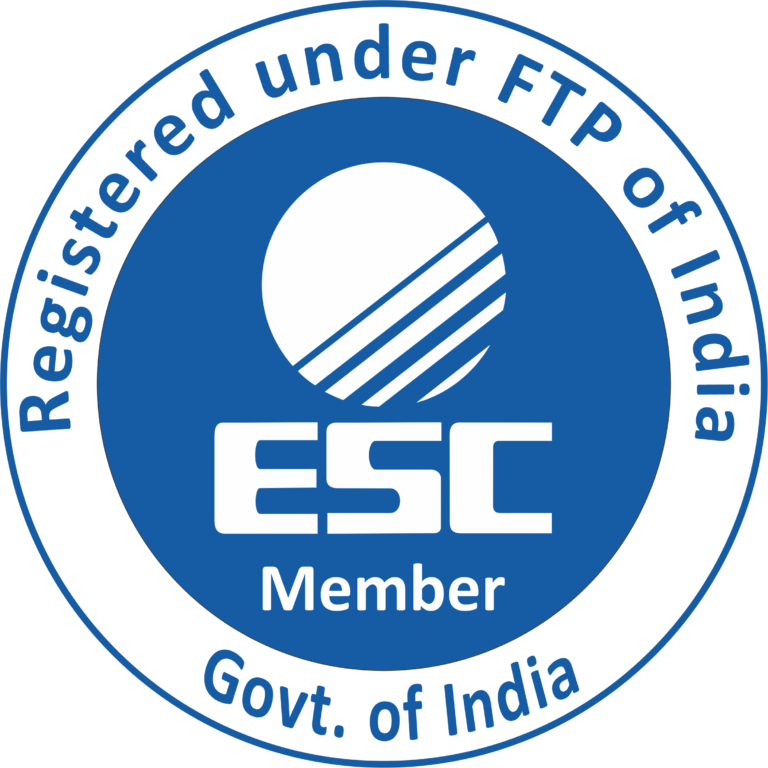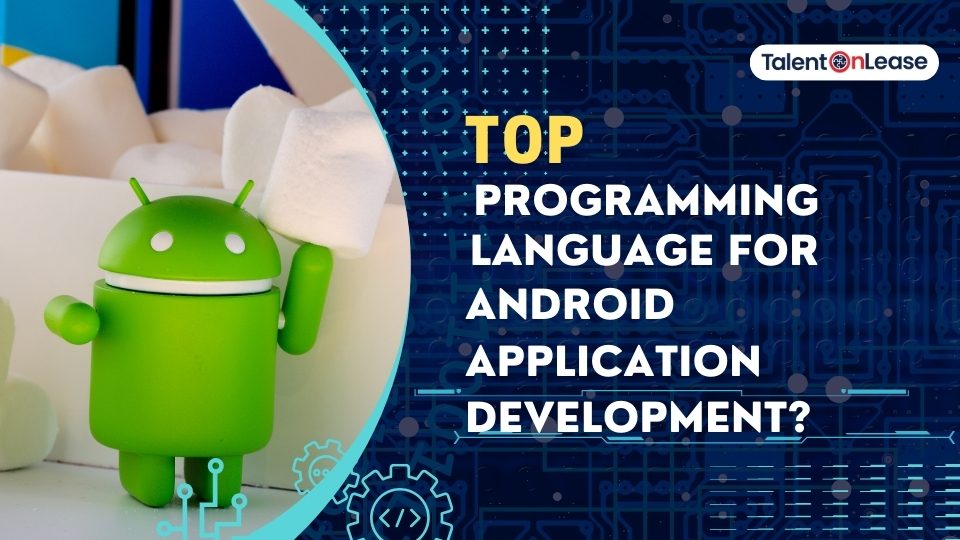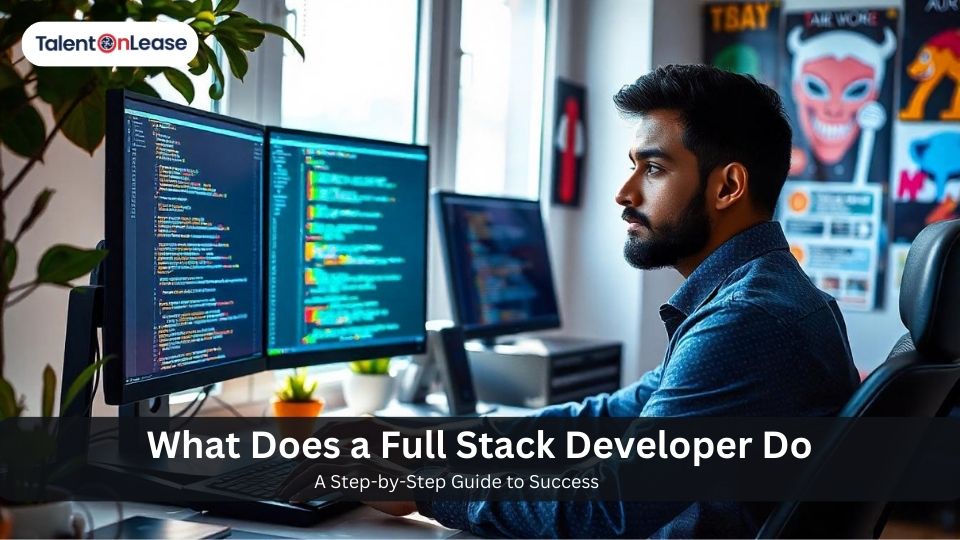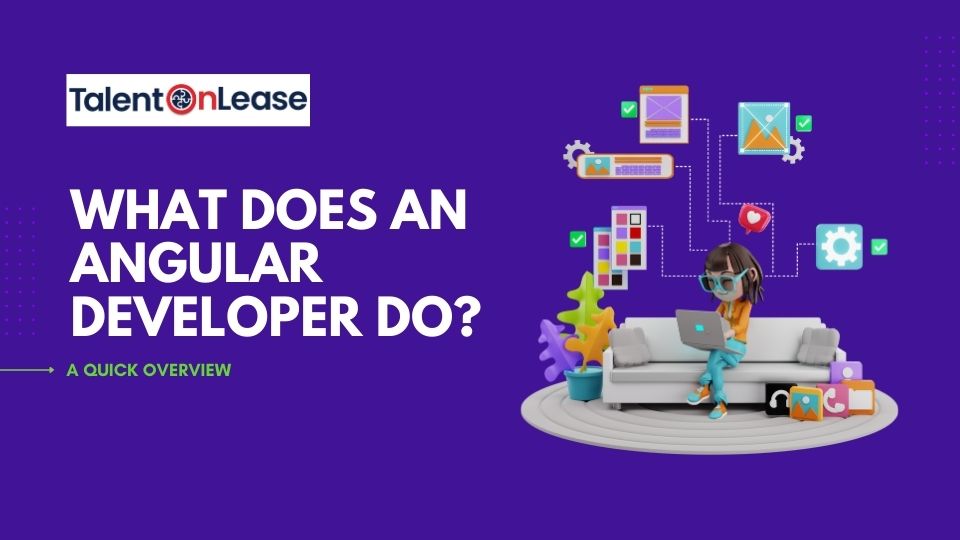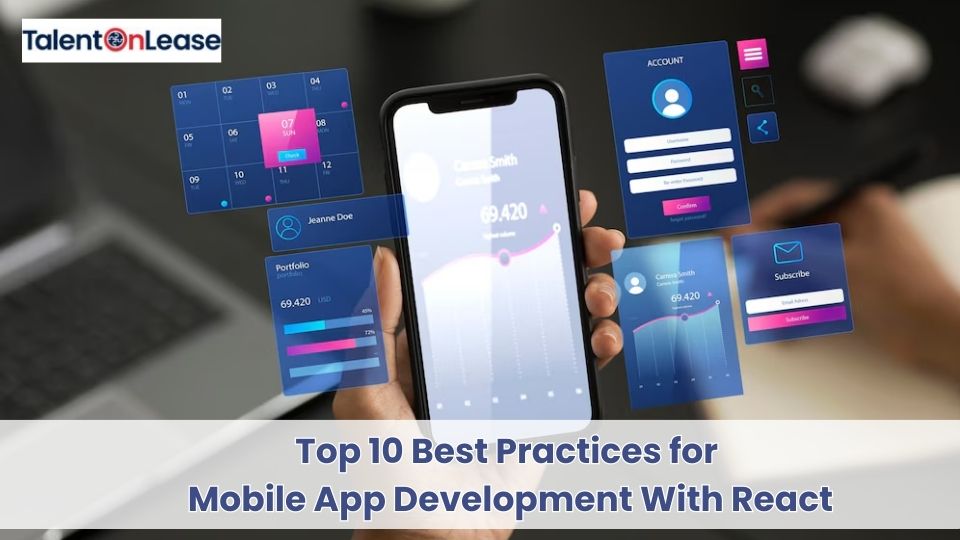Most Important Skills of A Full Stack Developer
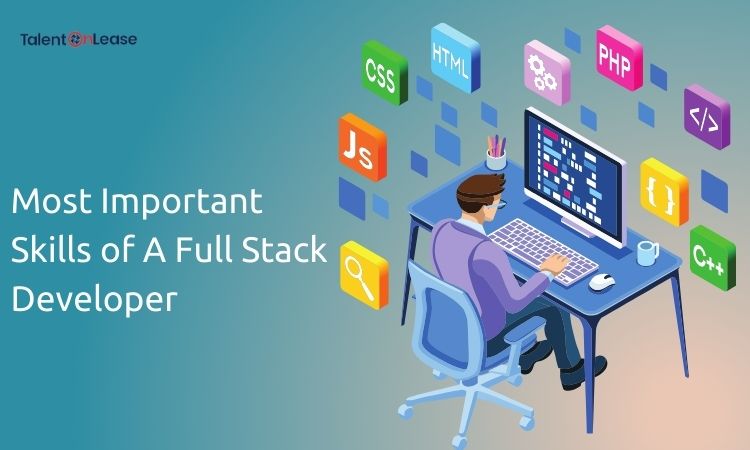
Web development has two parts: frontend and backend development. Every web or mobile application includes these two parts. The front end includes the visual parts of the application. This is what the user interacts with on the screen. The backend of an application handles the business logic. How the site functions, how the data flows, and how data is stored is all the domain of the backend.
When you combine the two, you get a full-stack web development. A full-stack web developer is an expert in both frontend and backend technologies. Full-stack developers are skilled coding experts who can deal with any kind of problem that is thrown at them.
In this article, we will discuss the top most important skills of a full-stack developer.
So, let’s get started!
Top 12 Important Skills of A Full-Stack Developer
1. Proficiency In Front-End Languages
It is important to have command in front-end languages. HTML, JavaScript, CSS, and React are some of the widely used front-end languages. Programming language is not only knowing the syntax and logic of a language. It is also about being able to solve problems and write clean and efficient code. The experts in front-end languages can use relevant tools and frameworks without any difficulties.
HTML – Governs the appearance of text/images on the screen. It formats the text as headings, paragraphs, pop-ups, and so on.
CSS – It is a style sheet that allows you to alter and style different web components for font, size, spacing, etc.
JavaScript – It is a powerful client-side front-end language. It is mainly used for enhancing user interaction with the application.
2. Front-End Frameworks
Understanding the core concepts of programming language is essential to work on the front end. These frameworks help organize and modularize the code. It streamlines the development process. React is currently one of the popular front-end frameworks. Frameworks have a certain way of organizing and writing code. It has its own benefits and trade-offs.
Front-end frameworks are collections of pre-written code and tools. It helps the developers build the UI/UX of a website or web application. These frameworks provide a structured approach to web development. It offers a set of reusable components. It also offers libraries, and utilities to streamline the process.
3. Back-End Languages
Back-end programming languages ease the process of communicating with the server. Through this, the information and data are given and received by the clients or users who use the program. In general, the popular back-end languages are Python, Java, Ruby, PHP, Node.js, C#, and Go.
Java is a back-end language, built from the ground up to be run on the server side.
However, Python is a multipurpose programming language. Its adaptability makes it a valuable tool for making web applications.
Node.js is an open-source, cross-platform runtime environment. It allows developers to create server-side tools
These two can be used for both front-end and back-end development.
4. Back-End Framework
Backend frameworks are tools that provide pre-built components. It provides functionality for developing the server-side logic of web applications and handles tasks like database interaction, user authentication, and request handling.
These framework tools also offer order management systems, inventory, and supply processing. It collects information from users or other data processing systems in the company.
Popular Java frameworks include Spring and Java Server faces. We use Python frameworks like Django and Flask for backend development.
Django is a high-level Python web framework. It enables the rapid development of websites. Notably, it is free and open-source and has a huge and active community of users.
5. Database Management
Almost all websites have a database where the application’s data is stored. For example, if you are an e-commerce website, this would be data about your products and users. For social media, it is the users and their posts.
Part of a full-stack developer skill set is being able to write queries to call up the proper data on the website.
Knowledge of data structure is also helpful here. That way the data is stored in a way that allows it to be queried most efficiently.
Designing, understanding, and manipulating database queries is a big part of the job.
6. Version Control and Collaboration
Version control is the task of managing the many contributions your group makes to shared working documents.
Imagine your document has a life story. Version control is like a time machine. It can take you back to the moment your document was born. It can also take you to any other point in time when you or a collaborator saved that document.
You don’t save copies of your document, you just save the life story of the document or its timeline.
A version control system tracks every alteration to a file or set of files. It enables developers to journey back to earlier versions and collaborate seamlessly.
7. Web Architecture
Web architecture or website architecture is the structure. Under which the information or contents of a web page are organised, ordered, and classified.
Its purpose is to help users find the information they are looking for. It also helps search engine spiders understand the relationship between the different pages.
In simple words, It’s a mechanism that gives us a clarification of how the connection is established between the client and the server.
8. DevOps AND Deployment
DevOps combines development (Dev) and operations (Ops). It is to increase efficiency, speed. And security of software development and delivery compared to traditional processes. The whole idea of this tech is to streamlining software development, deployment, and operations.
DevOps is how these ideas are implemented in practice. Everything is in the name of the game, from code integration to application operations.
9. Problem Solving and Critical Thinking
Working on a feature, especially a big one, takes a decent amount of organisation. You will want to do some research and planning before you dive in. This is where your thought process and problem-solving abilities come in.
Writing code and seeing what you made in action is certainly the fun part. To save pain and trouble later, you need to sit down and map out your plan.
You have to think about everything clearly so that every step goes smoothly. If by chance any problem occurs, you have to have strong problem-solving abilities.
10. Soft Skills and Communication
There is a lot to communicate when working on a project with a team. You will need to speak with the designer, product manager, and other developers.
You might also have to talk with stakeholders depending on your company and position.
To be happy and productive at work, you will always have to communicate your thought process, and action plan so that your team can help you.
11. Best Security Practices
Use strong passwords, and think before you click on suspicious links. Turning on multi-factor authentication are the basics of what we call ‘cyber hygiene’.
Following the above-mentioned practices will help improve your online safety.
- Install anti-virus software and keep all computer software patched.
- Update operating systems, applications, and antivirus software regularly.
12. Understanding of Agile Methodologies
Agile methodology is a project management framework. It breaks projects down into several dynamic phases, commonly known as sprints.
It aims to provide complete working deliverables. This goal should always take priority over any requirements, such as project documentation.
Other metrics, such as hours spent or time elapsed are not considered very important. There are 4 values of agile methodology:
(i) Individuals and interactions over processes and tools.
(ii) Working software over comprehensive documentation.
(iii) Customer collaboration over contract negotiation.
(iv) Responding to change over following a project plan.
Difference Between Frontend & Backend Development:
| Aspect | Frontend | Backend |
|---|---|---|
| Prime Target | Visuals and interactive aspects of a website | Focuses on server-side, database, and application logic for the functioning of a website. |
| Main Languages | HTML, CSS, JAVA Script, Typescript | Python, Java, Ruby, PHP, Node.js, C#, Go |
| Key Frameworks | React, Angular, Vue.js, Bootstrap | Express.js, Django, Flask, Ruby on Rails, Spring |
| Tools | VS Code, Chrome, DevTools, Figma, Adobe XD | Postman, Docker, Jenkins, Databases, (My SQL, Mongodb) |
| User Interaction Methods | Direct interaction with the front interface | Indirect interaction through data processing & API management. |
| Common Concepts | Responsive design, user experience (UX), accessibility, SEO, animations | Authentication, authorization, data modelling, server-side logic, database management) |
| Performance Metrics | Loading speed, smoothness of user interaction, rendering performance | Server response time, database query optimization, scalability, and reliability |
| Security Concerns | XSS (Cross-Site Scripting), and CSRF (Cross-Site Request Forgery), ensuring data validation. | SQL injection, ensuring data encryption, managing user authentication and authorization |
| Development Role | Close work with designers | Work closely with frontend developers. |
Programming Languages and Tools for Full Stack Development:
Tools:
- Backbone
- WebStorm
- GitHub
- Slack
- TypeScript
- CodePen
- Electron
- Visual Studio Code
Languages:
- Hyper Text Markup Language (HTML): for developing efficient and simple-to-use web pages as interfaces.
- CSS: for giving the web pages an aesthetically pleasing & user-friendly look.
- Bootstrap: The most well-known CSS framework, simple to use and effective in real-life applications.
- JavaScript: For creating interactive & dynamic web pages.
- HTML DOM: to use components as object models for better loading in search engines.
- Python: for machine learning, data analysis, and back-end web development
Conclusion:
When considering if a full-stack development career is right for you, it is definitely worth thinking about what expertise is needed. It is not about having all the full-stack developer skills already. It is rather an interest to learn and practice them. The skills of a full-stack developer are built and refined throughout their entire careers. It is not about being perfect. It is more about being interested and open to changes and always eager to learn new things.
TalentOnLease is one of the best IT Recruitment Agencies. It hires Full-Stack developers and gives them the best work environment.
